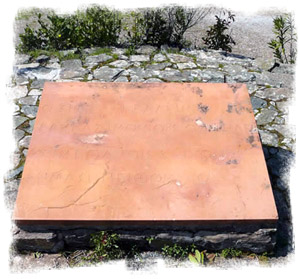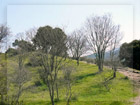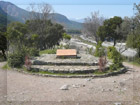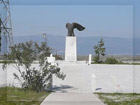
 |
| MAIN |
| Introduction |
| Greek Preparations |
| Armies |
| Battlefield |
| Battle |
| Aftermath |
| Date |
| Monuments |
| COMPLEMENTARY |
| Thermopylae |
| Leonidas I |
| Xerxes I |
| Sparta |
| Thespiae |
| Molon Labe |
| Monuments |
||||
|
Simonides composed a well-known epigram, which was engraved as an epitaph on a commemorative stone placed on top of the burial mound of the Spartans at Thermopylae. It is also the hill on which the last of them died. Spyridon Marinatos discovered large numbers of Persian arrowheads there. The original stone is not to be found now. Instead the epitaph was engraved on a new stone erected in 1955. The text is
Ω ξείν', αγγέλλειν Λακεδαιμονίοις ότι τήδε O xein', angellein Lakedaimoniois hoti tede An ancient alternative rendering substitutes πειθόμενοι νομίμοις for ρήμασι πειθόμενοι.
The form of this ancient Greek poetry is an elegiac couplet. Some English translations are given in the table below. Translation Notes Go tell the Spartans, stranger passing by, Go, stranger, and to Lacedaemon tell Go tell the Spartans, thou that passest by, Go tell the Spartans, passerby, Go tell the Spartans, you who read; Stranger, bear this message to the Spartans, Stranger, report this word, we pray, to the Spartans, Stranger! To Sparta say, her faithful band, Friend, tell the Spartans that on this hill Stranger, tell the Spartans that we behaved as
they would wish us to, Ruskin said of this epitaph that it was the noblest group of words ever uttered by man. Its purpose is not to attract attention, but rather to show that they fear that Sparta may become suspicious that their soldiers left their duties, and they wished to ask travelers to tell Sparta the truth. Leonidas monument Additionally, a modern monument was constructed at the site, in the 50's, called the "Leonidas Monument" in honour of the Spartan king and his warriors. It features a bronze statue of Leonidas. A sign, under the statue, reads simply: "Μολών λαβέ" ("Come and take them!"). The metope below depicts battle scenes. The two marble statues on the left and the right of the monument, represent respectively the river Evrotas and the mount Taygetus, hallmarks of Sparta.
Thespians' monument In 1997, a second monument was officially unveiled by the Greek government, dedicated to the 700 Thespians who fought with the Spartans. The monument is made of marble and features a bronze statue depicting god Eros, who was worshiped in ancient Thespiae. Under the statue a sign reads "In memory of the seven hundred Thespians". A plate, below the statue, explains its symbolism :
The monument of Thespians is placed beside the one of the Spartans.
Permission is granted to copy, distribute and/or modify this article under the terms of the GNU Free Documentation License, Version 1.2 or any later version published by the Free Software Foundation.
(What does it mean?)
The text is based on material from the Wikipedia article "Battle of Thermopylae". Modifications, additions to the Wikipedia text and all the photos by the website author. |




